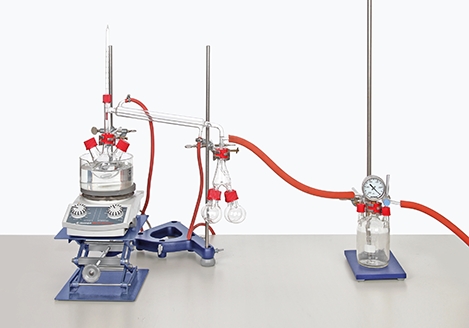Principle
Bromine is polarised and, thereby, activated by zinc chloride as a Lewis acid. It can attach itself in an ionic manner to the toluene nucleus via several complex intermediate stages. Following a dehydrobromination, bromotoluene is formed, i.e. the product of bromination in the nucleus.
In the absence of a catalyst and under the influence of light, however, side-chain bromination takes place via radical intermediate stages. The reaction can be controlled in a targeted manner by varying the reaction conditions.
Benefits
- Secure connection of the items by GL screw joint system
- Stable and safe setup due to solid stand material
Tasks
- Brominate toluene using bromine.
- Change the reaction conditions to optimize your results.
- Distillate the resulting mixture.
Learning objectives
- Bromine
- Toluene
- Lewis acid
- Bromination
- Distillation
